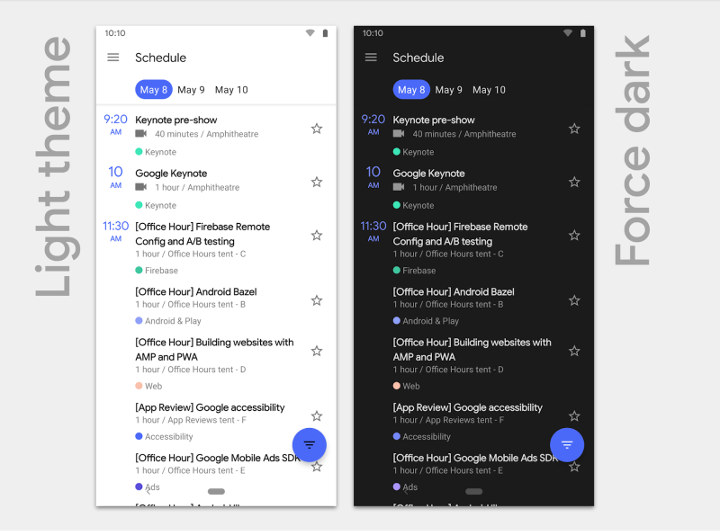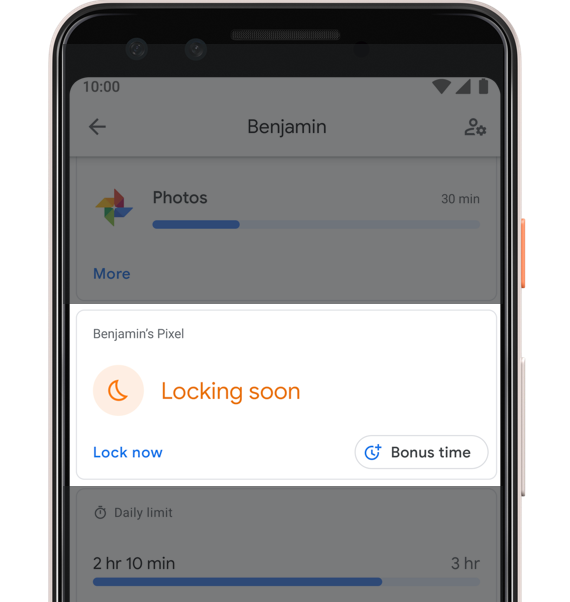Google introduced Android Q in March with the first beta and preview SDK release. The new version of Android introduced more privacy protections, support for foldables, sharing shortcuts, connectivity improvements (e.g. WPA3 security), new camera and multimedia features such as dynamic depth photos and AV1 media codec support, as well as an updated neural network API, higher ART performance, and security improvements.
Google has now announced Android 10 Beta 3 with a few new features over the first preview release, and support for 15 OEM phones on top of the 6 Pixel phones already supported.
Some of the new improvements in Android 10 Beta 3 include:
- Scoped Storage feature giving users control over files and preventing apps from accessing sensitive user or app data. See the corresponding developer page for details.
- Update of BiometricPrompt authentication framework to support biometrics, e.g. face recognition, at a system level.
- Project Mainline described as a new approach to keeping Android users secure and their devices up-to-date with important code changes, direct from Google Play. That means (some) OS updates will be like app updates and do not require a system reboot. The updates will be open source, and Project Mainline will be supported by all devices running Android Q or greater.
- Support for 5G networks
- Live Caption automatically captions media playing on your phone which make content more accessible to deaf and hard of hearing people, and for people watching media in a noisy environment like a crowded place.
- Smart replies are available and enabled to all apps in Android 10
- Dark theme is now implemented in the latest version of Android. App developers can customize their app with their own dark theme as well.

- Gestural navigation eliminates the navigation bar area and allows apps and games to use the full screen. It retains the Back, Home, and recents navigation through edge swipes rather than visible buttons, and can be enabled in Settings > System > Gestures.
- Digital wellbeing is being augmented with Focus Mode and Family Link. Those new features are designed to help people and their kids spend less time on their smartphone. Focus mode reduces the number of notifications by pausing specific apps while working or studying, while Family link enables parents to better control how and when kids use their phone.
- Audio playback capture – In Android Q, any app that plays audio can let other apps capture its audio stream using a new API.
- Thermal API – Apps and games can use a thermal API to monitor changes on the device and take action such as reducing resolution/bit rate while streaming video in order to help restore normal temperature.
You can try Android 10 Beta 3 in recent Pixel phones as well as the following 15 phones:
- ASUS ZenFone 5Z
- Essential Phone
- Huawei Mate 20 Pro
- LGE G8
- Nokia 8.1
- OnePlus 6T
- OPPO Reno
- realme 3 Pro
- Sony Xperia XZ3
- TECNO SPARK 3 Pro
- Vivo X27, NEX S and NEX A
- Xiaomi Mi 9, Mi MIX 3 5G
You can do so by joining the beta program. If you don’t have any supported device you could try the Android GSI images for phones that support Project Treble. Finally, it’s also always possible to test Android 10 on the Android Emulator found in Android Studio.

Jean-Luc started CNX Software in 2010 as a part-time endeavor, before quitting his job as a software engineering manager, and starting to write daily news, and reviews full time later in 2011.
Support CNX Software! Donate via cryptocurrencies, become a Patron on Patreon, or purchase goods on Amazon or Aliexpress





